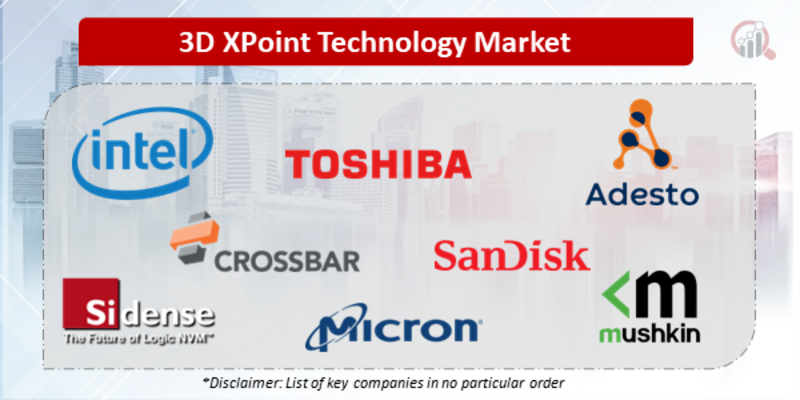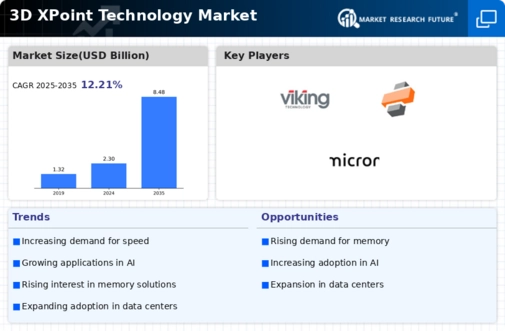Top Industry Leaders in the 3D XPoint Technology Market

The Competitive Landscape of 3D XPoint Technology:
3D XPoint, a revolutionary non-volatile memory technology, has disrupted the storage landscape with its exceptional performance. Its high speed, low latency, and endurance make it a game-changer for applications like high-performance computing, enterprise storage, and real-time analytics. As the market continues to grow, the competitive landscape is evolving rapidly, with established players vying for dominance and new entrants seeking to carve their niche.
Some of the 3D XPoint Technology companies listed below:
- Intel Corporation
- Viking Technology
- Toshiba Corporation
- Adesto Technologies Corporation
- Sidense Corporation
- Crossbar Inc.
- Micron Technology
- Sandisk Corporation
- Mushkin Inc
Current Landscape: A Duopoly with Divergent Strategies
Intel and Micron, the co-developers of 3D XPoint, currently hold the reins of the market. Intel leverages its existing memory business and brand recognition to target enterprise and high-performance computing segments. Micron, on the other hand, focuses on cost-effectiveness and has made significant strides in developing lower-cost variants, attracting budget-conscious customers.
Market Share Analysis: Beyond Volume, Value Matters
Gauging market share in the 3D XPoint market requires looking beyond just the volume of units shipped. Factors like average selling price, revenue generated, and application-specific adoption paint a more nuanced picture. For example, Intel might hold a larger market share in terms of units shipped, but Micron's lower-cost offerings might generate higher overall revenue. Additionally, the dominance in specific applications, like high-performance computing for Intel, can be crucial for future growth.
Emerging Players: Disrupting the Status Quo
While Intel and Micron remain the primary players, several emerging companies are making waves. Samsung has entered the fray with its X-NAND technology, offering a competitive alternative with potential cost advantages. Startups like Everspin and Graphcore are exploring alternative memory architectures based on spin-transfer torque (STT) and Magnetoresistive Random-access memory (MRAM), respectively, with the potential to outperform 3D XPoint in specific applications. These new players inject innovation and competition into the market, pushing the boundaries of performance and cost.
Strategies for Success: A Game of Innovation and Differentiation
In this dynamic landscape, success hinges on adopting the right strategies. Continuous innovation in memory technology, exploring new applications, and strategic partnerships are key. Intel, for instance, is collaborating with Dell and Lenovo to integrate 3D XPoint into their server offerings, targeting the high-performance computing market. Micron is focusing on developing lower-cost variants and expanding its reach into emerging markets like automotive and IoT.
Latest Company Updates:
January 2023- In January of 2023, the semiconductor company Micron Technology revealed that their Micron 9400 NVMe SSD has entered large-scale manufacturing and can now be obtained right away from channel partners and global OEMs for use in servers that need top-tier storage speeds. The purpose of the Micron 9400 is to manage extremely demanding data center workloads, especially ones involving artificial intelligence training, machine learning, and high-performance computing.








